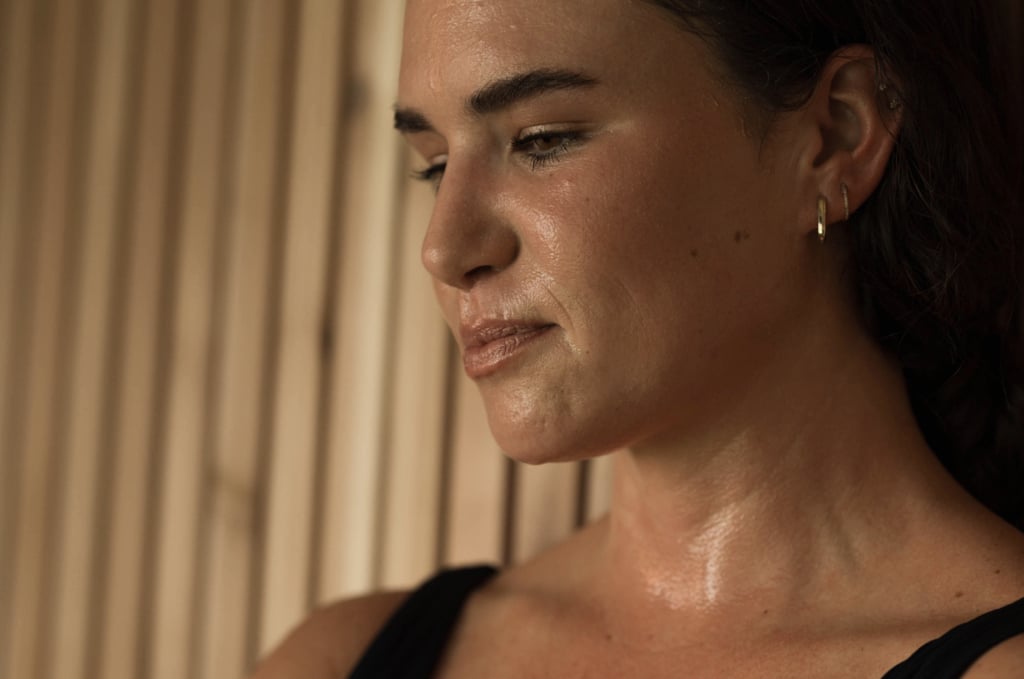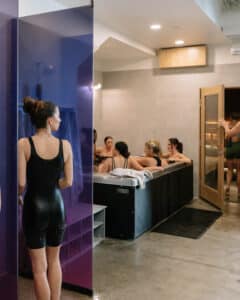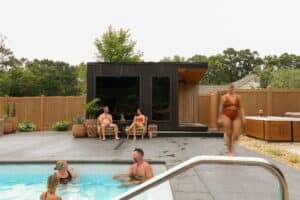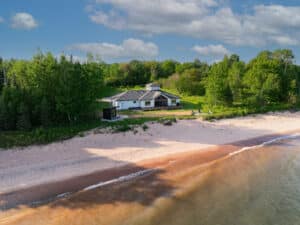Blog originally written and published by our friends at Framework.
The impact of cherished hot exposure treatments have been enjoyed across the world for centuries.
These traditional heat therapies do much more than just provide a temporary escape from the daily grind. Frequenters of traditional saunas cultivate an exposure practice—and in turn, access enhanced mental, emotional, physical, and social health.
An abbreviated history lesson on saunas
In the historical context, saunas were heated by burning wood, a process that filled the room with an enveloping warmth and a comforting blanket of smoke. Subsequently, water would be ceremoniously poured over the hot rocks, a ritual that produced a cloud of steam, effectively increasing the humidity and the perception of heat, and bringing those satisfying waves of heat.
Frequenters of traditional saunas cultivate an exposure practice—and in turn, access enhanced mental, emotional, physical, and social health.
Saunas, an integral part of Finnish culture, have been enjoyed for thousands of years, serving as a backbone of Finnish tradition. They provide a haven for relaxation, act as a conduit for physical and mental purification, and are a social hub for spending quality time with friends and family. The very term “sauna” originates from the Finnish word “savu,” which translates to “smoke,” hinting at its ancient roots and traditional heating methods.
This process was not just about heat—it was a transformative experience, a bridge between the physical and the spiritual. Today, saunas have found their way into gyms, spas, and hotels. Yet, in Finland saunas are more than just a luxury. They’re a necessity. In almost every household in Finland there’s a sauna, and it’s a common practice for families to use it together. Reinforced bonds, connection to routine and nature, deep-rooted health rewards.
The sauna has stood the test of time. And now in North America, it’s starting to thrive.
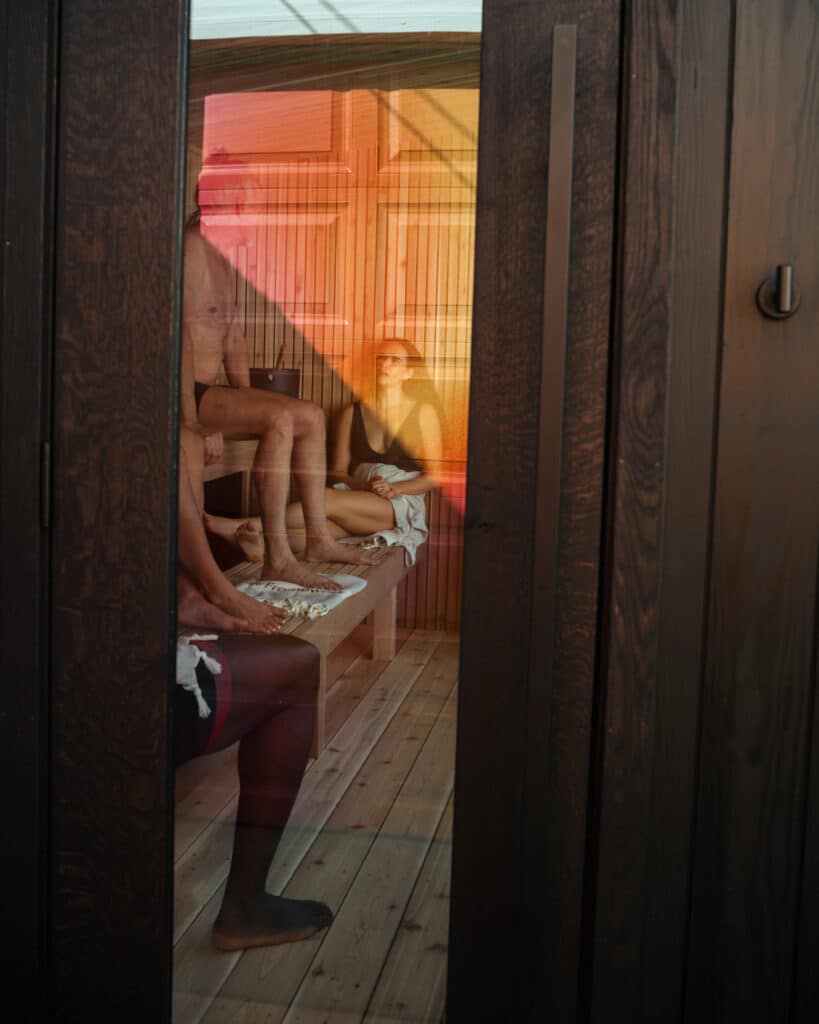
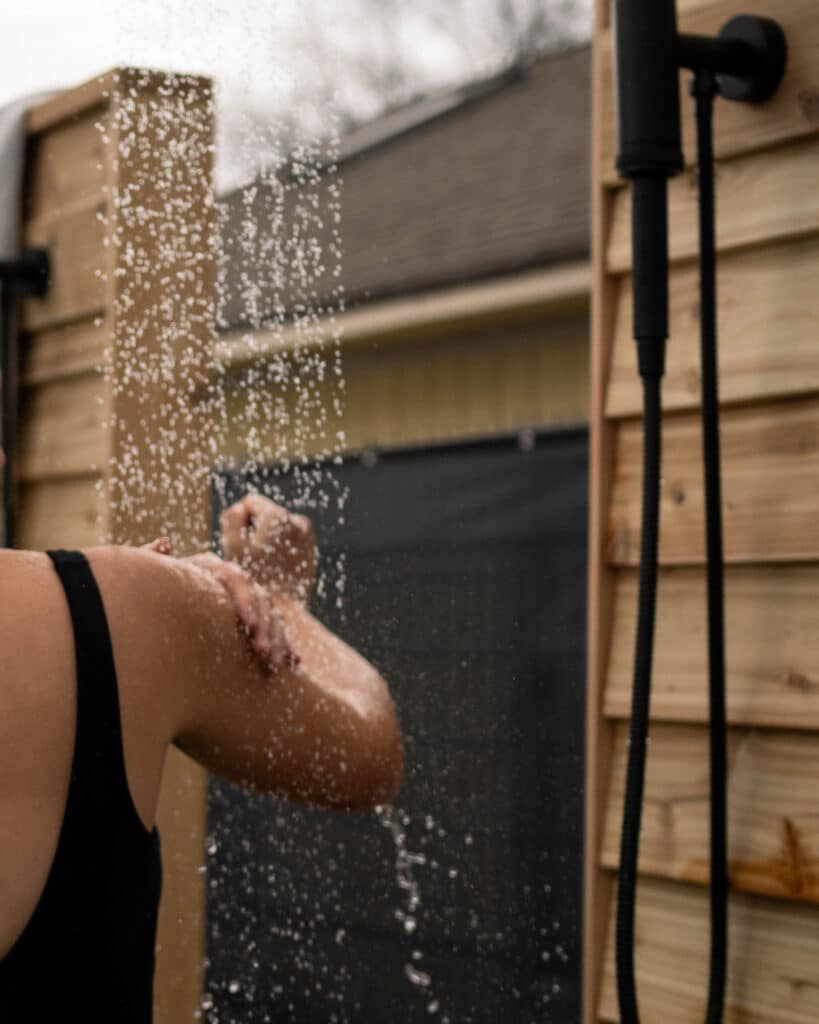

Simple steps, big benefits.
The traditional sauna is not just a place for relaxation and bonding—if you put in the work, it boasts a treasure trove of health benefits like these well-researched and science-backed gains focused on:
- 50% reduction in cardiovascular disease mortality for lowered chronic disease risk and longevity gains.*
- 48% increase in heat shock proteins for cellular repair, immune support, musculature support and longevity.
- 29% reduction in cortisol production for stress relief.
- Increased body temperature management for improved sleep.
*All percentages above illustrate the studied benefits associated with frequent and consistent sauna and cold exposure. Asterisked percentages are dose-dependent.

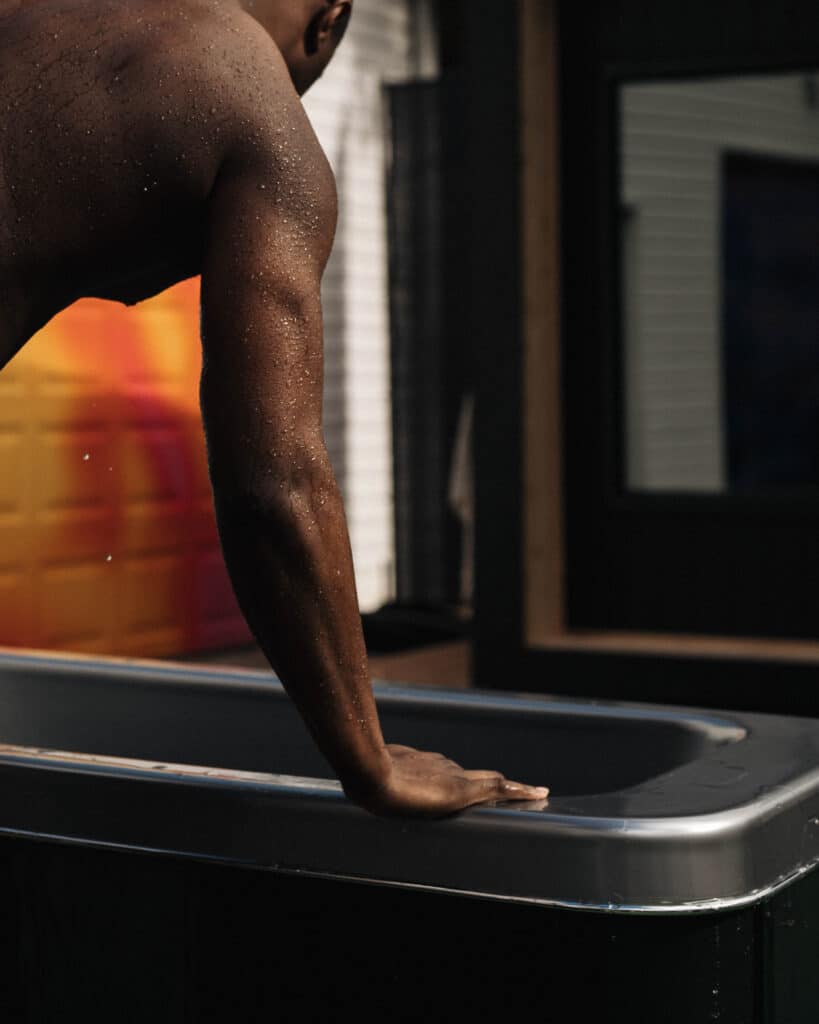
What about ‘infrared sauna’ options, though?
Traditional saunas are the superior choice—a status backed-up by extensive research and centuries of usage.
A wood heater heats the air in the room to approximately 175°F, and the baseline humidity is low, likely 10% or less. Adding water to the rocks in the room can raise the humidity to ~30% and induce additional waves of heat, as well as make the air more comfortable to breathe. The rule of 200 suggests making the approximate standard temperature setting of 170-180°F plus 20–30% humidity an effective, health-rich sweat.
Infrared cabins, also referred to as ‘infrared sauna’, uses far, near, and mid-wave infrared radiation to penetrate the body’s skin directly and induce heating. The temperature is typically 120-140°F and the room humidity typically mirrors the ambient conditions, typically up to 10%. It isn’t just all of the key health benefit claims being studied on traditional saunas at 175 or higher—it’s that studies have also found near-infrared health benefit claims are overstated.
Steam rooms use a heater to heat water, produce steam, and thus warm the room. The temperature is typically between 100-110°F with nearly 100% humidity. Note, steam rooms tend to comply with the rule of 200, while infrared cabins fall short.
Steam rooms create a moist environment that can aid in improving respiratory health and opening up skin pores, but similar to infrared, the heat level is not high enough to match the conditions that sauna health benefit claims were studied in.

Frequent sauna sessions. A lasting foundation for your health.
Ready to enjoy all the benefits a traditional sauna has to offer? It’s all about the preparation and the right balance of hot and cold. Let’s dive into some practical tips to make your sauna experience truly transformative:
- Drink lots of water. Don’t forget to get plenty of water down before and after your sweat session to keep your body hydrated. Staying hydrated is super important to keep your body temp in check during and after you heat up. At least a glass or two of water before you start, and lots of sipping afterwards to replace all that water you’ve sweated out, is necessary. Keep your water bottle handy all day.
- Take the plunge. Want to feel better and live longer? Mix hot and cold temperatures—it’s like a workout for your blood vessels. Ever take a cold plunge after a hot sauna? Instant joy. It sends endorphins through the roof, chills out anxiety, and gives you a nice energy boost. The hot-cold switch has all sorts of perks. It can up your game in sports, give your brain a boost, and even boost your metabolism. Making cold immersion a regular part of your routine can kick your body’s natural healing powers into high gear, and you’ll be buzzing with energy in no time.
- Give the sauna rocks a bath. One way to improve the perception of heat and increase humidity in a given area is by splashing water on rocks. This method accomplishes a few things—it increases the perception of temperature for those who like it hot. It increases humidity to reduce dryness, which makes it easier to breathe and easier on the sinus passages. An added plus? The sound of water trickling over rocks, the hiss of the water-turned-steam dancing into the air? It’s undeniably soothing.
- Time of day counts. We know that hitting the sauna can do wonders for you, and the benefits can change depending on when you go. If you’re more of a night owl, spend your evening in the sauna to let go and wind down after a hectic day. A warm hug to melt away muscle tension and stress, calm your mind, and make it easier to drift off to sleep, as the heating of your body in the sauna will trigger a cool-down mechanism in your body once you exit (the exact mechanism that your body needs to fall asleep). If the sauna ritual is a part of your morning routine, sandwich your sauna in between an initial cold plunge to get straight into your exposure workout and finish with cold to get your caffeine-free espresso shot (cold plunging for up to three minutes). Regular sauna visits are a total health boost—improving heart health and supercharging your immune system. If you’re a sauna newbie, start slow with shorter sessions while targeting60 minutes of hot exposure a week.
- Frequency is key. Daily sauna sessions are the way to go. The sauna gets your blood flowing faster, which is a big plus for everything from your brain to your toes. Feeling spread thin? A sauna is a stress-busting powerhouse. Sore muscles from hitting the gym or carrying the kids? The sauna’s heat can soothe those aches. It isn’t just about feeling good in the moment—it’s about working from the inside out. A persistent reset button for your body, for an evergreen refreshed and rejuvenated feeling.
- Towel off and take it all in before hitting the road. Being mindful is crucial, especially regarding your body and how it moves through sudden temperature changes. Let your body temperature normalize before you jump into cold water or dress up—especially if you have been exercising or moving between exposures. Waiting a few minutes before making the hot-to-cold switch or dressing is highly recommended. Giving your body enough time to regulate? It’s what’s most effective.
Adjust your practice. Flex to your goals.
When it comes to sauna sessions, there is no one-size-fits-all approach. Everyone has a different tolerance for heat—it’s essential to find a balance that works for you. You can adjust your sauna experience to make it more comfortable or intense by changing the distance from the heater, bench height, water use, duration, or follow-up exposure to the cold. Experimenting with different adjustments makes your routine, yours.
Enjoy, don’t ‘endure.’
One of the common misconceptions about sauna? It’s just another workout practice to endure. No pain, no gain. That ‘beat the buzzer,’ ‘push yourself,’ mentality necessary for some workouts often are brought to a sauna practice.
“Bring your friends, you’ll be surprised at the kind of real authentic conversation you will have while in the sauna.”
But that’s not necessarily the way cultural wisdom suggests.
“The practice of sauna can be social, connected, enjoyable and fun, Cedar & Stone Co-Founder Justin Juntunen says. “It’s much more like gathering somebody around the dinner table than trying to hit your PR that you’ve been working so hard to get. Cultures around the world know this. In North America, we are just discovering the quality and experience of the sauna ritual—hot, cold, rest, hydrate, and repeat. Bring your friends, you’ll be surprised at the kind of real authentic conversation you will have while in the sauna.”
Let us be your guide.
Our super friendly staff is trained—always eager to assist you in optimizing your sauna experience based on research. Need help deciding whether to start with hot or cold? Want a suggestion on the ideal duration of your sauna session to ensure specific benefits? Our staff can help you choose based on your goals. So your experience is as safe, beneficial, and ultimately enjoyable as possible.
Our sauna experience offers a range of temperatures and atmospheres. Because sometimes, your practice calls for quiet and meditative. Other times, more social and interactive. Think large windows, customized music, and more.
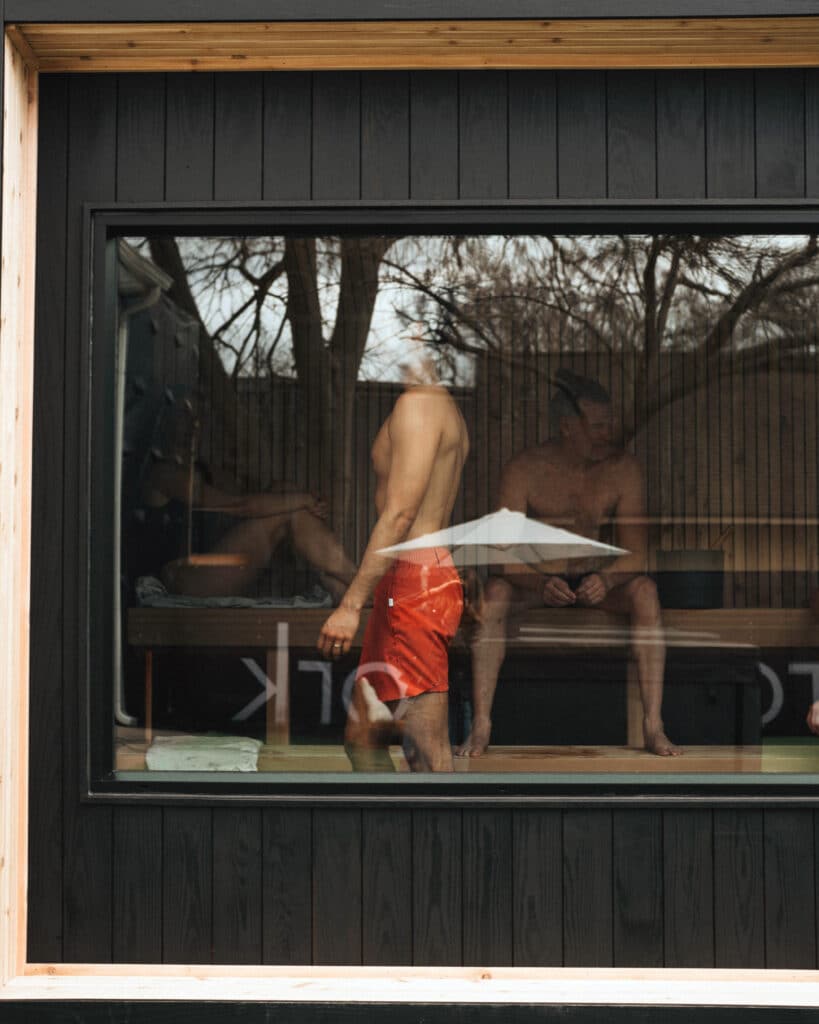
Located in or visiting Nashville, TN? Visit our friends at Framework.
Sauna with us in Duluth or Minneapolis, MN
Want to add an outdoor sauna for recovery and relaxation to your property? Reserve yours.
Photos by : Jessica Steddom Photography

